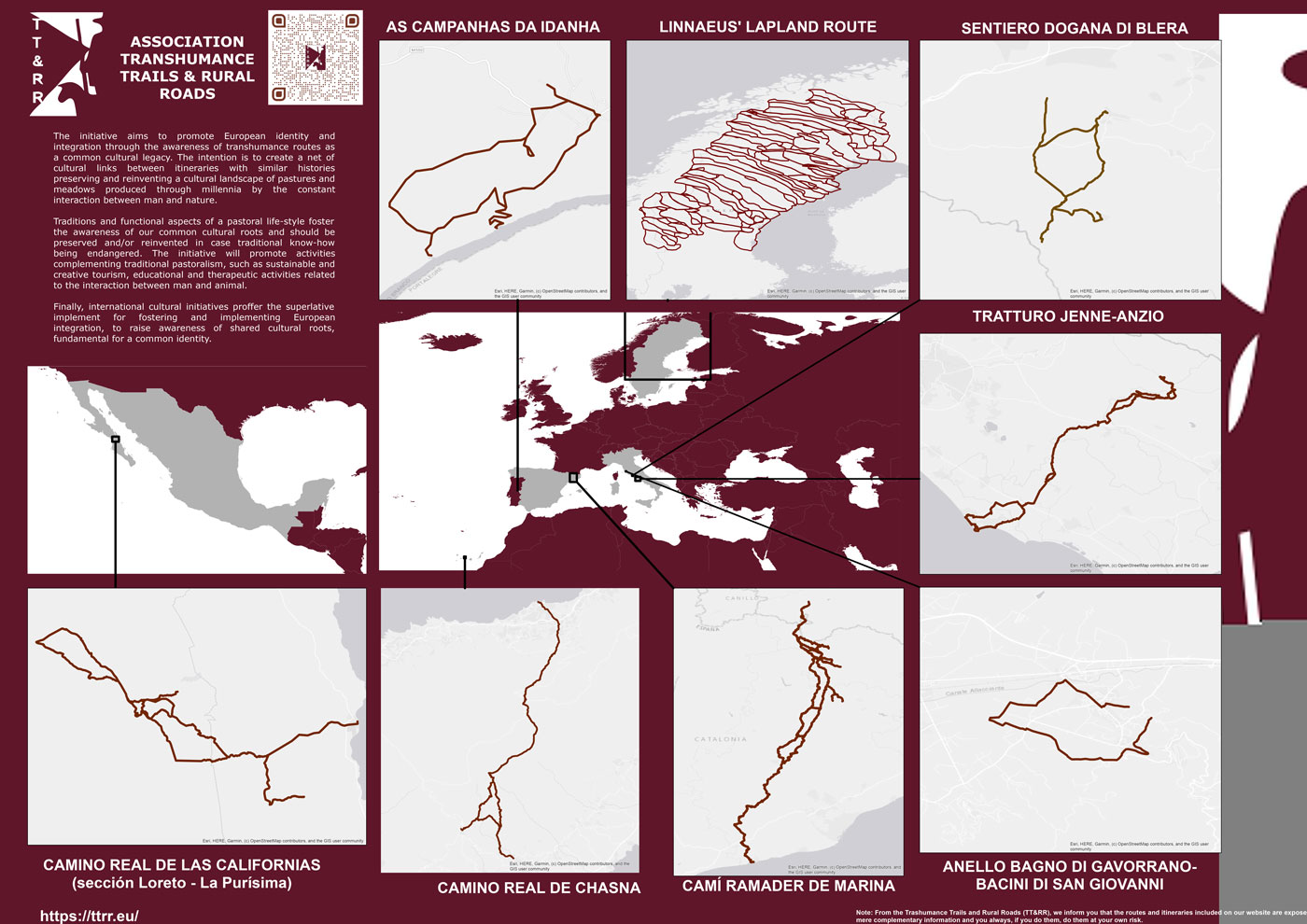& Rural Roads
Transhumance routes constitute a true common European cultural heritage which unites the northern and southern countries from their earliest form of civilized life

The initiative aims to promote European identity and integration through the awareness of transhumance routes as a common cultural legacy. The intention is to create a net of cultural links between itineraries with similar histories preserving and reinventing a cultural landscape of pastures and meadows produced through millennia by the constant interaction between man and nature.
Traditions and functional aspects of a pastoral life-style foster the awareness of our common cultural roots and should be preserved and/or reinvented in case traditional know-how being endangered. The initiative will promote activities complementing traditional pastoralism, such as sustainable and creative tourism, educational and therapeutic activities related to the interaction between man and animal.
Finally, international cultural initiatives proffer the superlative implement for fostering and implementing European integration, to raise awareness of shared cultural roots, fundamental for a common identity.

”Transhumance Trails & Rural Roads. A European network of traditional itineraries” was initiated in 2016 as an international and multidisciplinary research initiative originating from three transhumance systems, showing the diversity from northern Europe to its southernmost region, and including three nations, Sweden, Italy, and Spain. The research areas are:
- the reindeer transhumance or semi-nomadism in Sapmi, Sweden
- the Mediterranean transhumance of sheep and cattle in Italy
- the goat keeping system of the vulcanic Canarian Islands, Spain
TTRR association is open to Institutions that studies Transhumance in all the multi-disciplinary aspects envolved and also to Entities that manage territory in which the main line, the route and the trail-tracks lie

Transhumance is a specialized and complex form of animal breeding which uses the climatic and geographical complementary situation between mountains and close-lying coastal land in order to gain optimal grazing all year round. It is a global phenomenon that has been practiced since man started taming ruminant animals such as sheep, goat, reindeer, horse, cattle. The movements of men and herds resulted in a net of codified trails, many of which are still used today, often converted into important highways linking distant regions.
Transhumance routes constitute a true common European cultural heritage which unites the northern and southern countries from their earliest forms of civilized life. They have created a cultural landscape of pastures, meadows, fords, and springs as well as a mental landscape of stories, myths, ideologies, and mentalities, deeply rooted in our collective memory and expressed in art, literature, music and consumption during millennia.
In some parts of Europe the transhumance has already disappeared as an economic sector, in others parts it is still alive. The recovery and reinvention of historical trails and rural roads is a matter of great concern for landscape protection and evaluation.

The Association Transhumance Trails and Rural Roads (Asociación Vías de Trashumancia y Caminos Rurales) is an international association, open to the integration of other regions, cities, municipalities, institutions and organizations, which request it, identify themselves with the objectives of the Association and meet the requirements decided by the ‘General Assembly.
The Association aims to promote and spread transhumance, as defined by the National Rural Network in the White Paper on Transhumance, which defines the “traditional itinerary of transhumance”. In this way the association will generate a quality cultural and tourist offer, with the aim of developing the territories where the different itineraries are located.

